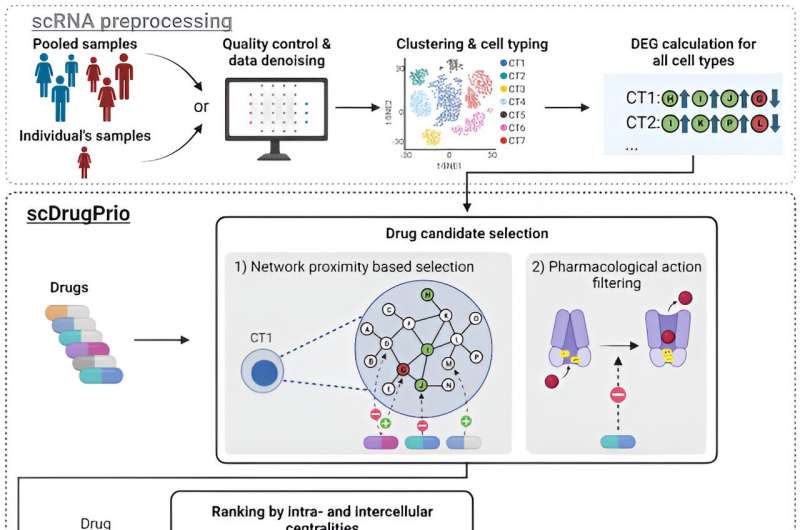This article has been reviewed according to Science X's editorial process and policies. Editors have highlighted the following attributes while ensuring the content's credibility:
fact-checked
trusted source
proofread
Q&A: A digital twin that allows tailored medication

Individual patients with autoimmune diseases can receive tailored medication by computationally treating their so-called digital twins with thousands of medications.
This is according to a study set to be published in Genome Medicine by researchers from Karolinska Institutet. A version of the paper is available on the bioRxiv preprint server.
What does your publication show?
"It is possible to construct a digital twin of an individual patient's autoimmune disease. This twin is computationally treated with thousands of drugs to find the optimal one for the patient. The twin is a computer model that is constructed by measuring the activity of thousands of different genes in each of thousands of cells in the diseased tissue," says Mikael Benson, senior researcher at the Department of Clinical Science, Intervention and Technology, Karolinska Institutet, and last author of the study.
"We have shown that this works by curing mice with inflamed joints with drugs selected by computationally treating their digital twins. In addition, we have constructed and computationally treated digital twins of individual patients' inflammatory bowel disease from a tissue sample. We found that the effects of the medications that the patients routinely received were consistent with the computational treatment of their twins."
Why are the results important?
"One of the biggest problems in health care is that many patients do not benefit from their medication. This causes enormous suffering and costs. A key reason is that most diseases are extremely complex. Thousands of genes can change the activity of billions of cells in different organs in the same patient."
"It is extremely difficult to cure such complex changes with drugs. Moreover, two patients with the same diagnosis may have very different changes and thus require different medications. The clinical benefit of data processing of digital twins may be that each patient gets the right medication at the first attempt, instead of trying different medications until the right one is found."
How did you conduct the study?
"We first constructed digital twins of mice with inflamed joints using a technique that analyzes the activity of 22,000 genes in each of thousands of cells. Data processing suggested that several new drugs would be effective, which we were able to demonstrate in new trials."
"We then applied the same methods to human patients with different autoimmune diseases. Since there were large differences between patients with the same diagnosis, we constructed and computationally treated twins of individual patients. We compared the results of the medications the patients received and those suggested by the computerized treatment of their twins. As I said, we found that these suggestions matched well with the results of the clinical treatments."
What are the next steps in your research?
"We are now planning clinical trials to tailor medication to individual patients with inflammatory bowel disease using digital twins. We also want to spread the methods to treat other diseases and make the methods and all the data freely available for similar studies. We are now working on developing the twins for early prediction and prevention of disease."
"The goal is for every willing individual to have their own twin from an early age for early prediction and prevention of disease. In addition, we want to develop methods to continuously update each individual's twin with new information from the individual and the environment, such as new treatment methods."
More information: Samuel Schäfer et al, scDrugPrio: A framework for the analysis of single-cell transcriptomics to address multiple problems in precision medicine in immune-mediated inflammatory diseases, bioRxiv (2023). DOI: 10.1101/2023.11.08.566249


















